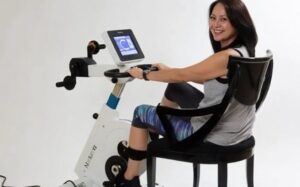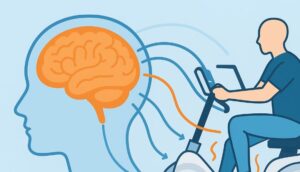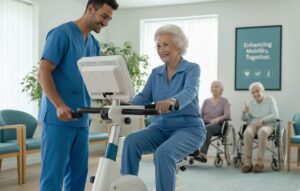
People living with multiple sclerosis (MS) are often dealing with a litany of symptoms. And it’s no surprise that many who have the disease would rather stay curled up in bed some days. However, physical activity is actually one of the most important parts of a successful treatment plan. Exercise has many benefits for those living with multiple sclerosis and it is imperative to include it in an active disease maintenance program.
Why is exercise important?
Although many patients worry that physical exercise will increase their pain or fatigue, the opposite is actually true. Exercise is important for people with multiple sclerosis as it helps them to maintain physical function and mobility, improve balance and coordination, reduce fatigue, improve their mood, and increase their overall quality of life.
Additionally, regular physical activity can slow down the progression of the disability and can help to manage symptoms such as muscle spasms, stiffness, and depression. However, it is important to speak with a doctor before starting any new exercise program to determine the right type and intensity of physical activity that is safe and effective for each individual with MS.
Incorporate active/passive therapy
Active/passive therapy (APT) machines provide low-impact exercise and can assist with range-of-motion therapy which is often beneficial for people with multiple sclerosis. These machines can be used to move a patient’s limbs using varying levels of motor-driven support, which allows patients to exercise even if their ability to move their limbs independently is reduced.
This method of therapy can help improve circulation, reduce muscle stiffness & spasms, and maintain or improve joint mobility. It can also help with balance and coordination, as well as reducing fatigue and improving overall physical function.
Passive motion devices can also be used in combination with active exercises, such as resistance training or stretching, to further enhance the therapeutic benefits.
Benefits of active/passive therapy
An at-home active therapy trainer or arm ergometer makes regular physical activity possible, even if the patient is dealing with reduced mobility and independent movement. There are several benefits of using an active/passive therapy machine for people with multiple sclerosis, including:
Improved range of motion: Passive motion devices like the MedUp V2 cycle trainer can help to improve joint mobility, reduce muscle stiffness and spasms, and maintain or improve flexibility.
Reduced muscle spasticity: These trainers can help to reduce and treat muscle spasticity, which is a common symptom of MS. The built-in spasm recognition software is designed to quickly identify spasms during use and quickly release them.
Improved circulation: Using a cycle trainer can improve circulation, which can help reduce swelling and inflammation in the affected limbs.
Increased muscle strength: An active therapy machine can also be used for resistance training, which can help to increase muscle strength and endurance, and slow down the progression of the disease.
Improved balance and coordination: They can help to improve balance and coordination, which are often impaired in people with MS.
Reduced fatigue: A common symptom of multiple sclerosis, fatigue can be reduced by adopting a routine that includes regular use of these therapy machines.
Enhanced overall physical ability: The use of active/passive therapy machines can improve overall physical function and help patients to maintain it for longer, allowing people with MS to retain their independence and quality of life.
Make exercise a part of the program
While exercising may be one of the last things a person wants to do when their body feels like it’s betraying them, it is actually an important part of a healthy rehabilitation program. With a disease like MS there is no way to stop or prevent the onset of symptoms, however a daily routine that includes exercise and physical activity can help to slow the progression.
An active/passive cycle trainer can help improve outcomes and make the exercise process easier for the patient, especially as the symptoms increase and independent movement becomes more difficult.




